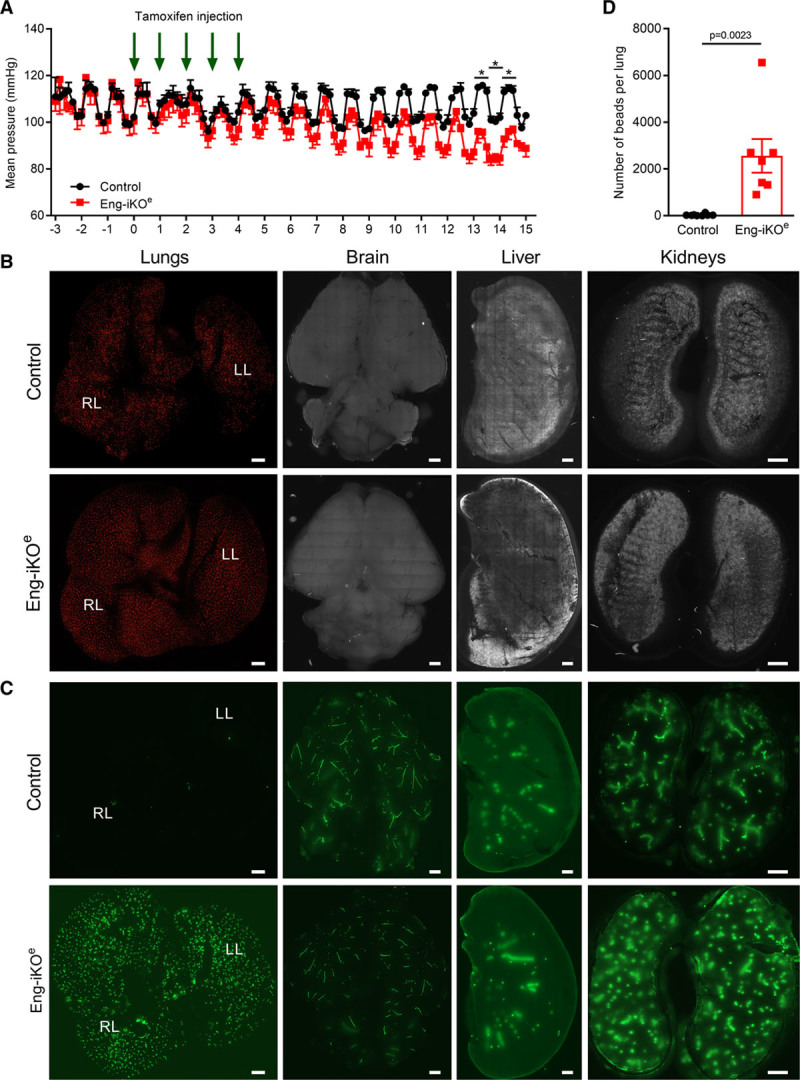Figure 3.

Rapid loss of aortic blood pressure (BP) and extensive left-to-right shunting from the systemic to the pulmonary vasculature in Eng-iKOe mice. A, Aortic telemetry shows the diurnal rhythm of BP in both groups of mice, with higher BP during the night when mice are the most active and lower BP during the day when they are asleep. Baseline measurements were made for 3 d before tamoxifen was delivered once daily for 5 consecutive days, and mean aortic BP subsequently falls in Eng-iKOe mice (n=4/group). Data analyzed by 2-way ANOVA with Bonferroni correction. *P<0.05, with the full set of P in Online Table V. B, Small fluorescent microbeads (15 µm3) injected into the tail vein of Eng-iKOe and control mice are all efficiently trapped in the lung vasculature, indicating absence of pulmonary arteriovenous malformations. No beads were detected in brain, kidney, or liver (n≥6/group). C, Large fluorescent microbeads (45 µm3) injected into the left ventricle of control mice are efficiently trapped in the vasculature of the systemic organs (brain, kidney, and liver) with few beads reaching the lungs. However, in Eng-iKOe mice, the microbeads rapidly reach the lungs within 1 min of bead delivery to the left ventricle (n≥8/group). Scale bar=2 mm. D, Quantification of microbeads used in C, reaching lungs of Eng-iKOe and control mice, analyzed by Mann-Whitney U test (n≥7/group). LL indicates left lung; and RL, right lung.
